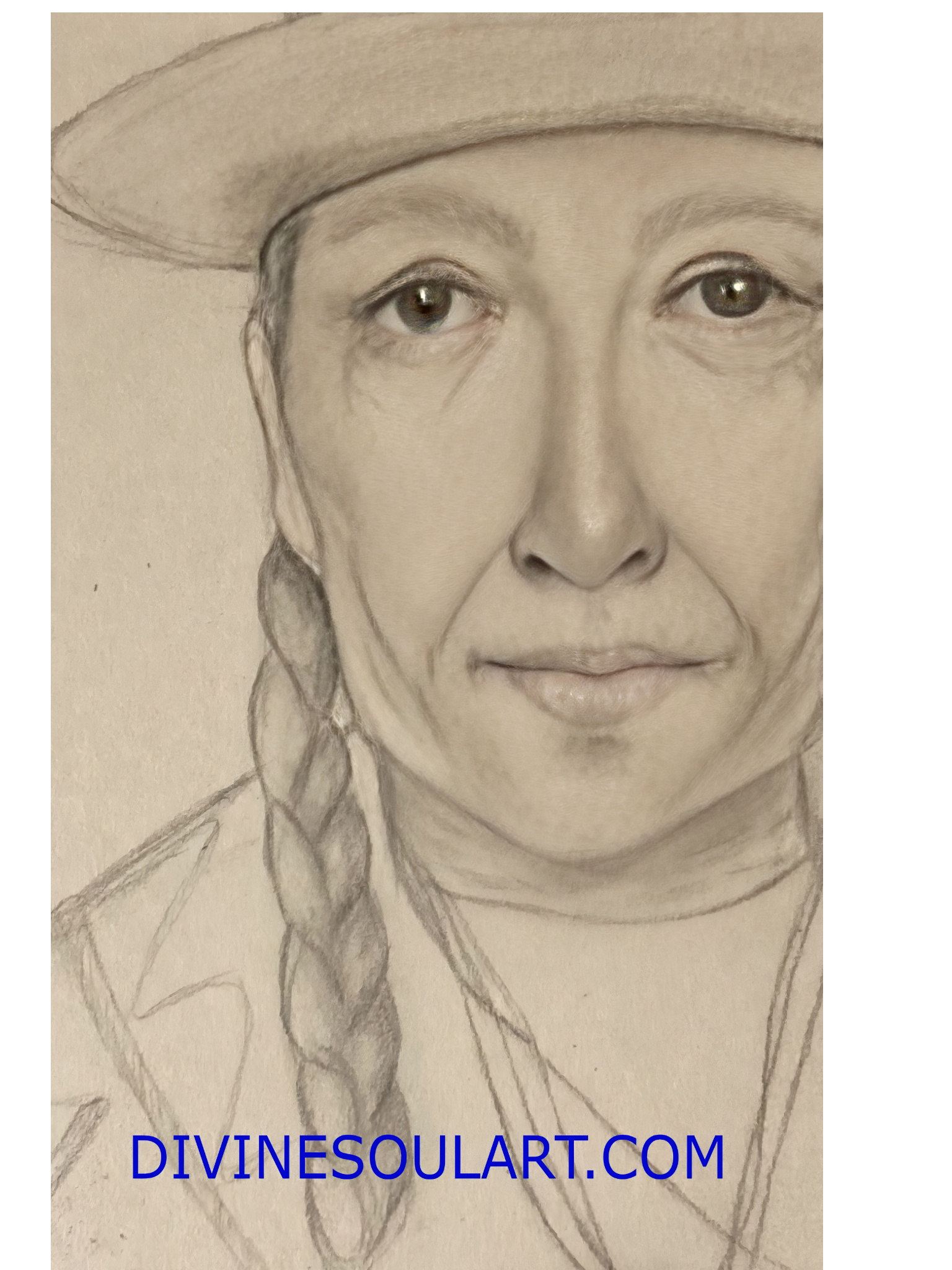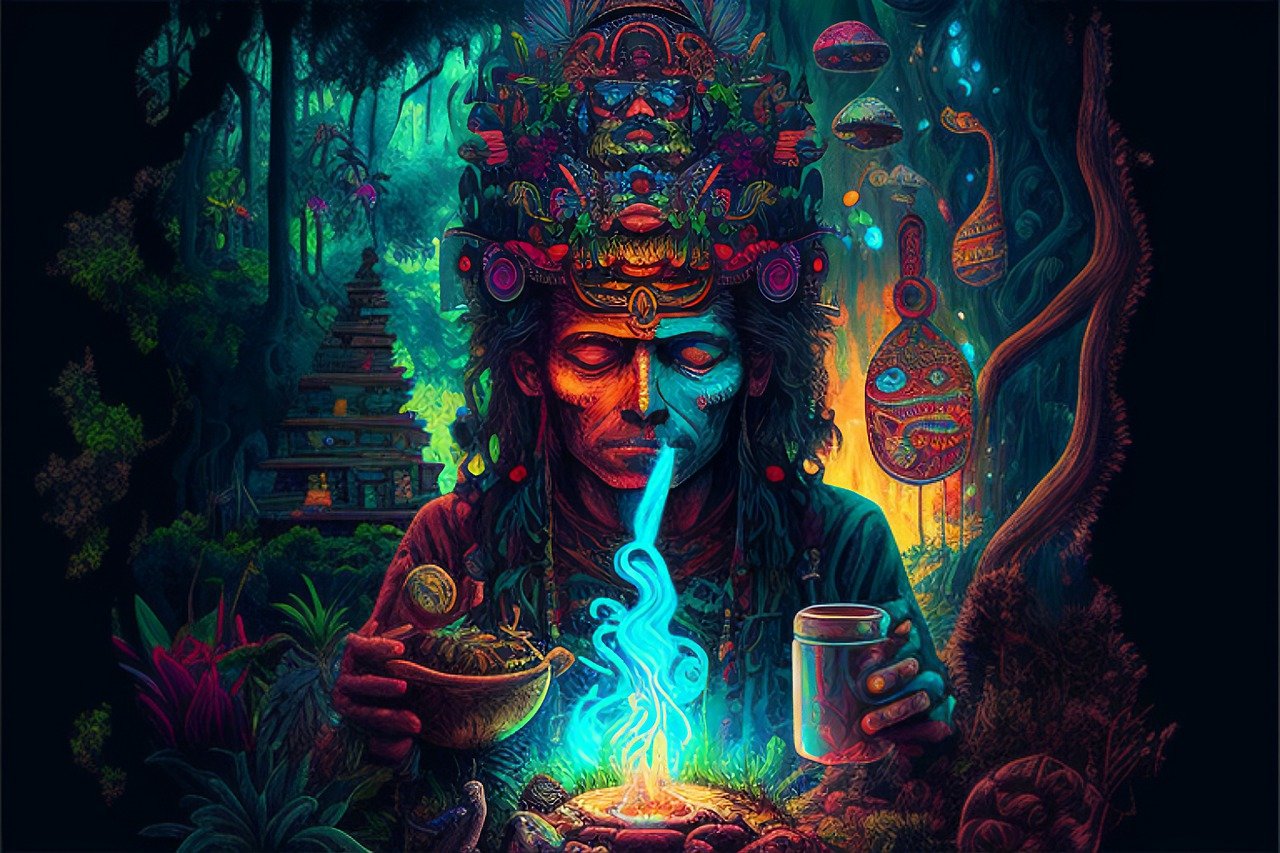What is Shamanism ?

What is Shamanism ?
Have you ever wondered what is shamanism and its healing potential?
Shamanism, a spiritual method found in various cultures worldwide, can offer profound insights and healing experiences. In this page, we will delve into the world of shamanism, exploring its origins, core concepts, and the powerful role of shamans as spiritual healers and guides.
By the end, you will gain an understanding of shamanic healing, the use of ayahuasca in shamanic practices, the importance of ethical considerations and cultural sensitivity when engaging with this powerful, transformative tradition. and my personal experience.
So, let us embark on this mystical journey and uncover the power of what is shamanism.
Understanding Shamanism: A Brief Overview
Shamanism is a spiritual practice with ancient origins which connects human beings to the spirit world for healing and guidance.
At the heart of shamanism lies the shaman, a spiritual healer, and guide who navigates between the seen and unseen realms to assist individuals in their healing journey.
Shamans employ a range of techniques and tools in their healing ceremonies, such as drumming, chanting, dancing, and utilizing sacred objects like crystals, feathers, and stones.
Shamanic journeying is a core aspect of shamanic practice, enabling the shaman to traverse the spiritual realms and communicate with otherworldly beings to promote healing and gain insight.
History
Shamanism has ancient origins dating back to the early Upper Paleolithic era.
Shamanistic beliefs and practices have been an integral part of indigenous peoples' lives in far northern Europe and Siberia for thousands of years.
The term “shaman” was adopted by Russians interacting with Indigenous peoples in Siberia, who often performed healing ceremonies and was subsequently introduced to Western Europe by the Dutch traveler Nicolaes Witsen.
The profound connection between human beings and the spirit realm and its enduring significance is highlighted by the rich history and varied forms of shamanism across different cultures.
Concepts
Belief in unseen forces or spirits affecting the living, including the physical body, forms the foundational principles of shamanism.
This belief system permeates various aspects of Indigenous cultures, with some practices involving the use of psychedelic drugs, such as ayahuasca, to facilitate communication with the spirit world.
Shamanism is distinguished by its:
- Adaptability
- Reliance on intentional trance states to interact with spirits
- Obtaining natural knowledge and counsel through ecstatic trance
- Conviction that souls are present in all living creatures
Ayahuasca consumption is one method used by some shamans to achieve these trance states and connect with otherworldly beings for healing and insight.
It is important to note that this practice is not related to drug and alcohol dependence.
The Role of Shamans
 image by MirelaKonto from pixabay
image by MirelaKonto from pixabayShamans undergo extensive training and initiation to develop their abilities to communicate with spirits and perform healing rituals.
Their expertise and influence are utilized to aid and cure members of their community, addressing issues ranging from physical ailments to mental illness and substance dependence.
During the healing process, the shaman spiritually enters the body’ of the patient, addressing the spiritual infirmity and expelling the contagious spirit to restore balance to the physical body.
Shamans have a unique approach that distinguishes them from other practitioners.
They possess a heightened capacity to journey in non-ordinary realms and use their spiritual associations to bring about changes in the tangible realm.
This allows them to offer curative benefits to individuals or the collective.
Shamanic Training and Initiation
Shamanic training is a rigorous process that involves the acquisition of knowledge on how to alter states of consciousness and the utilization of spirits in the spiritual realms for healing and transformation.
This voyage of self-discovery and the development of confidence in employing time-honored shamanic methods, such as healing ceremonies, can span multiple years.
Often, shamanic training involves learning through dreams or signs and might include a ‘shamanistic initiatory crisis’ involving physical illness or psychological crisis.
This training and initiation process is essential for shamans to develop their abilities and effectively serve their communities as spiritual healers and guides.
Shamanic Techniques and Tools
Shamans employ a variety of techniques and tools to establish a connection with the spirit world and promote healing.
Ecstatic trance, a state of altered consciousness that allows shamans to access the spirit world and gain insight, is a key aspect of shamanic practice.
Music also plays an important role in shamanism, as it is employed to induce trance states and facilitate communication with the spirit world.
The utilization of totemic items, such as rocks with special powers and an animating spirit, is also commonplace in shamanic practice.
According to Shamanic Universe, "In shamanic cultures... all the beings in the natural world have spirits animating and empowering them. Incense Cedar spirit, Ponderosa Pine spirit, lake spirit, lightning spirit, spirit of rain, snow spirit, star spirits… The natural world is full of living, compassionate nature spirits who help the shaman divine answers to urgent life questions. The voice of bird, the crackling of fire, the sound of wind and wave — all of these are the shaman’s helpers on her quest for knowledge, survival and healing."
Shamans rely on these techniques and tools to effectively connect with the spirit world, navigate non-ordinary realms, and facilitate healing for those in need.
Shamanic Healing

Shamanic healing is a comprehensive approach to health and well-being that incorporates spiritual traditions and techniques to address physical, emotional, and spiritual issues.
It is often an element of a multi-faceted approach to an illness, compatible with conventional medicine and other integrative treatments.
As part of an all-encompassing approach to health and wellbeing, shamanic healing can offer physical, emotional, and spiritual benefits.
Some of the benefits of shamanic healing include:
- Addressing the root causes of illness like chronic inflammation and oxidative stress
- Providing a holistic approach to health
- Promoting balance and harmony in the body
- Supporting emotional healing and trauma release
- Enhancing spiritual connection and personal growth
Shamanic method for healing can provide powerful benefits to those seeking a holistic approach to their health.
Physical Healing
Physical healing in shamanism involves the banishment of infectious spirits and addressing the root causes of illness, such as chronic inflammation and oxidative stress.
This process is achieved through a range of healing processes, including chanting, drumming, and the utilization of herbs and plants, which are employed to reestablish balance and harmony to the body and mind.
The potential advantages of physical healing in shamanism may include enhanced physical health, augmented mental acuity, and an augmented sense of wellbeing.
Shamanic healing, by addressing the spiritual and energetic aspects of illness, can provide powerful support for those on their healing journey.
Ayahuasca
Healing the Emotional and Spiritual Aspect of Yourself
 image by fszalai from pixabay
image by fszalai from pixabayEmotional and spiritual healing in shamanism may involve the resolution of traumas, maladaptive behaviors, and the promotion of self-reflection and mindfulness capacities.
Ayahuasca, a powerful psychedelic brew, is sometimes used in shamanic practices to facilitate emotional and spiritual healing by bringing repressed emotions and memories to the forefront of one’s awareness.
Ayahuasca experiences help in gaining insights which are helpful in self-reflection and can change the person's self-perspective.
This can result in psychological understanding that provides answers to personal issues which are the root of maladaptive lifestyles.
Addressing the emotional and spiritual aspects of healing, shamanic practices can offer a transformative and empowering experience for those seeking psychological well-being improvement.
Particularly in South America, where it is a cornerstone of many Indigenous cultures’ shamanistic beliefs and practices, ayahuasca has been used in traditional healing ceremonies for centuries.
The potential benefits of ayahuasca include neuroprotective and neurorestorative effects, improved psychological well-being, and possible treatment for addiction, anxiety, depression, and PTSD.
Ayahuasca Preparation and Ceremony
Ayahuasca ceremonies are led by experienced shamans, who prepare the brew by boiling and combining the broken stems of the ayahuasca vine (Banisteriopsis caapi) and leaves from the chacruna shrub (Psychotria viridis).
The preparation process is meticulous, ensuring the brew is concentrated and free from impurities.
At the ceremony, the participants consume ayahuasca through ayahuasca tea, which can cause intense hallucinations, euphoria, and altered states of consciousness.
These experiences can offer valuable insights into one's psychological state, help in resolving personal conflicts, and facilitate self-reflection and mindfulness
Effects and Potential Benefits
The potential benefits of ayahuasca include:
- Inducing powerful psychedelic experiences
- Augmenting the mindfulness capacity of the brain, improving psychological well-being
- Facilitating self-reflection and prompting changes in self-perspectives
- Providing solutions to personal problems that underlie maladaptive lifestyles, such as substance abuse and dependence
It is important to note that ayahuasca is not a panacea and should be approached with caution and respect for its powerful effects.
When used responsibly and under the guidance of an experienced shaman, ayahuasca can offer profound insights and healing experiences, supporting individuals on their journey towards improved mental health and well-being.
Respecting Indigenous Traditions
Respecting Indigenous traditions involves acknowledging the origins of shamanic practices and supporting the revitalization and preservation of these practices within Indigenous communities.
We can demonstrate respect for Indigenous cultures and their traditions by researching and gaining knowledge about the culture and its history before engaging with it, as well as supporting organizations devoted to preserving and promoting these practices.
By understanding the importance of these practices to Indigenous communities, we can help to ensure.
Finding a Shamanic Practitioner
While finding a qualified shamanic practitioner can be challenging, resources like the Foundation for Shamanic Studies can assist in identifying reputable practitioners.
In addition to consulting resources like these, it is important to research a practitioner’s background, training, and experience to ensure they are well-equipped to guide you on your shamanic journey.
Inquire friends, family, or other practitioners for recommendations when seeking a shamanic practitioner.
Once you have identified a potential practitioner, ask them about their initiation, training, and practice to gain a better understanding of their expertise and approach to shamanic healing.
Identifying Qualified Practitioners
When identifying a qualified shamanic practitioner, it is essential to research their background, training, and experience.
This can be done by inquiring directly with the practitioner, pursuing online research, or requesting references from other practitioners.
Thoroughly vetting potential practitioners ensures trust in someone with the necessary expertise and experience to guide you on your healing journey.
Preparing for a Shamanic Session
Prior to a shamanic session, it is recommended to set clear intentions, such as what you hope to learn or heal.
Contemplate what you wish to gain or heal from the session and consider jotting down your intentions to bring with you during the session.
It is crucial to approach the session with an open mind and a genuine desire to learn and grow and let go of any expectations or preconceived ideas.
Ensure that the environment is agreeable and free from distractions and have a dependable companion or relative present to offer emotional support if needed, especially if there are concerns related to blood pressure.
Proper preparation for your shamanic session can create a safe and supportive space for profound healing and transformation.
Summary
In conclusion, shamanism offers a powerful and transformative approach to healing, tapping into ancient wisdom and spiritual practices that have been utilized by various cultures worldwide.
By understanding the origins, core concepts, and role of shamans in shamanic healing, we can appreciate the profound potential of this spiritual practice to address physical, emotional, and spiritual issues.
Whether through the use of ayahuasca or other shamanic techniques and tools, engaging with shamanism can offer profound insights and healing experiences.
As we explore this mystical world, it is essential to approach shamanism with much respect for Indigenous traditions.
May your journey into the world of shamanism be enlightening and transformative.
Frequently Asked Questions
What are the Beliefs of a Shaman?
Shamans are part-time religious specialists who use an alternate state of consciousness to enter an invisible world and interact with its spirits.
They believe in the interconnectedness of everything, acting as mediators for their community and communicating with both living and dead spirits.
Shamans are believed to be able to heal physical and psychological ailments, as well as provide guidance and advice to their community.
They are also thought to be able to communicate with the spirit world and use their knowledge.
What religion is shamanism based on?
Shamanism is a spiritual practice that spans across multiple religious beliefs, with particular roots in the Ainu religion and Shinto.
It has also been influenced by Buddhism and other elements of continental East European culture since the early Middle Ages.
What is Shamanism in Christianity?
Shamanism in Christianity involves the spiritual practice of calling on the divine to shepherd others in a spiritual way. It also involves connecting directly to the spirit world through contemplative practices and devotions.
What is the role of a Shaman in Shamanism?
Shamans are spiritual healers and guides that connect individuals to the spirit world to promote healing, insight, and guidance.
What is the significance of Ayahuasca in Shamanism?
Ayahuasca is an integral part of shamanism, as it has been traditionally used by shamans for its potential to induce profound spiritual experiences, as well as for mental health and addiction treatments.
Related Articles
Spiritual Messages and Paintings and Spiritual Tales books are now available on Amazon.

Click below and views more than 600 pieces of spiritual artwork

Spiritual Books
If you enjoy the articles on this website, you will also appreciate the short stories in the books below. Click here and continue the journey.



